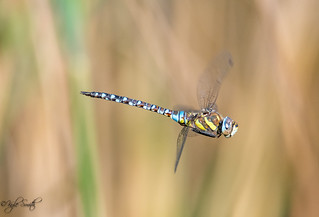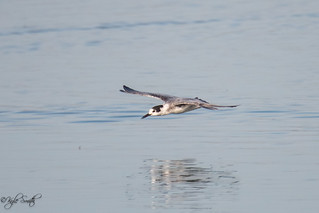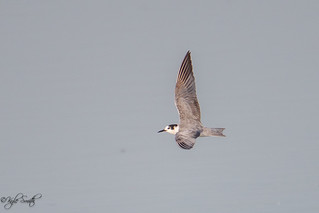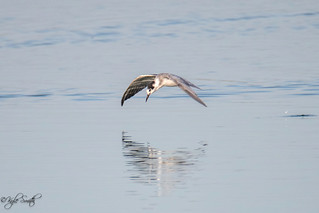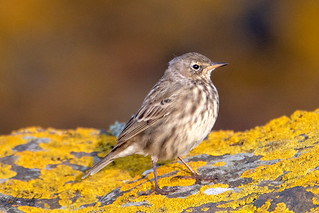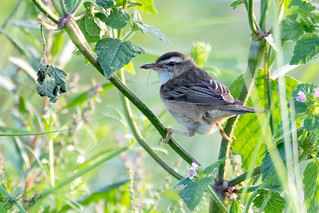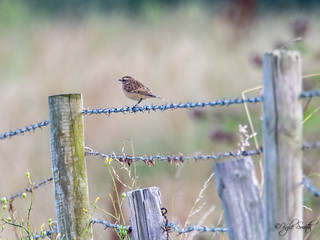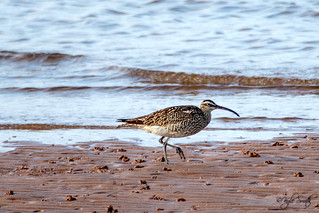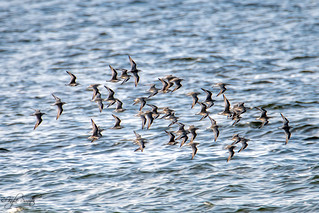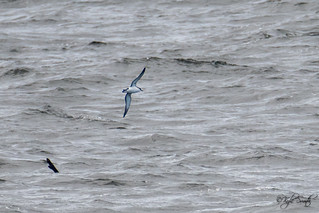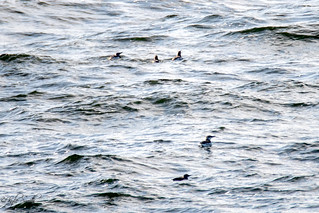We decided to do something a bit different for our annual osprey pilgrimage, booking on the Rutland Water Dawn Osprey Cruise. Rather than try and get up and aim for a 5.45am arrival, we booked into 'the noel' hotel, just 5 minutes from Whitwell Harbour. Arriving in the evening before the visit we checked in, had a drink and headed to a nearby pub restaurant, the "Fox and Hounds - Exton'. Having booked, we turned up at 8.00pm and were surprised when they instantly knew who we were - they have had good reviews and this is why we picked them out ... unfortunately they said that 'they had a bad night, the earliest they would be able to serve us was at 10.00pm', and that 'we would be better going somewhere else'. Slightly taken aback I asked why they hadn't called; they said that they hadn't known until now. All very strange ... easily solved by going back to our hotel, where we had no problems being served some great food.
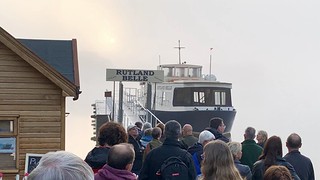
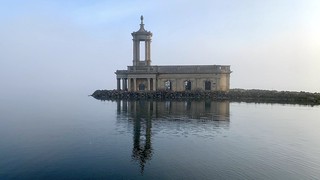
We arrived at Whitwell Harbour, joining the queue for the Rutland Belle at 05.45am. It was very misty but we hoped that the sun, just rising above the horizon beyond the boat, would burn it off quickly. As we waited, an osprey cruised by offshore. We boarded at 06.00am and set off into the mist. We passed great black-backed gulls, common terns and large numbers of cormorants, but it wasn't until we reached Normanton that we saw any clearing of the mist. The organisers decided to hold-up at the bay beside Normanton Church to see if conditions would improve.
We listened to the history of the church; when the demands of a growing population had to be met at the end of the 1960s, consultation had taken place to decide on a suitable site for a much-needed new reservoir and the Gwash valley in Rutland was chosen. The valley had to be cleared and so Normanton Church was deconsecrated and scheduled for demolition, but the general public had other ideas and their protests were successful. When it came time to flood the area, it became obvious that the church would be partially submerged once the high-water level was reached. This would mean the gradual erosion of its lower walls and foundations. A hastily formed trust was organised with the aim of rescuing the building from a watery demise and various proposals were considered.

Finally, it was decided that the lower level of the church should be filled with rubble and topped with concrete to create a new floor. This would be approximately 60cm above the water level. The church would become a small island once the reservoir was filled, and so a causeway was built connecting it to the nearby shore of the lake and an embankment was constructed around the building. A layer of boulders was then put in place as a defensive breakwater.
We sat and spotted common sandpiper flitting along the shore, grey wagtail and then five mandarin duck.  Calling ahead were wren and green woodpecker. Pied wagtails hopped along the parapets of the church and common tern fished around the bay.
Calling ahead were wren and green woodpecker. Pied wagtails hopped along the parapets of the church and common tern fished around the bay.
Conditions seem to have improved and so we eventually took to the water again. Not too long into the journey one of the other passengers spotted an osprey running fishing circuits off towards the shore. We watched and sailed to try and get a closer look; unfortunately, after a few minutes the osprey turned and headed away into the mist without any actual diving for fish. The mist was still hanging on across most of the reservoir and so we made for the sailing club and then along to the dam. 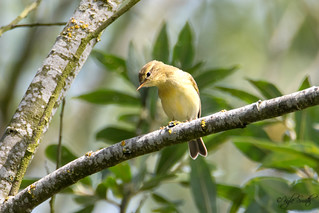 We didn't see any other ospreys but it had been a magical cruise on an atmospheric reservoir.
We didn't see any other ospreys but it had been a magical cruise on an atmospheric reservoir.
We disembarked, jumped into the car and returned to our hotel for breakfast. Bizarrely, the couple we had been sitting beside on the boat were doing exactly the same! Full cooked breakfast ... get in.
We checked out and decided to head for the Lyndon Visitor Centre and to head for the Shallow Water hide in Manton Bay. As we pulled into the car park, there was the couple we had sat with on the boat, and who had stayed at the same hotel - stalking?
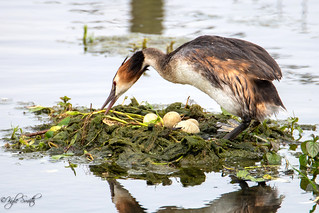 On the trail to the hides I stopped to watch a mixed flock of blue and long-tailed tits - a couple of 'yellow' birds flash across. I left the path and headed for the tree/hedge-line to investigate. About halfway across the meadow a grass snake broke cover and shot off towards the hedge. It didn't half move - really good views. When I got to the edge of the meadow I found the birds and ID'd them as willow warbler.
On the trail to the hides I stopped to watch a mixed flock of blue and long-tailed tits - a couple of 'yellow' birds flash across. I left the path and headed for the tree/hedge-line to investigate. About halfway across the meadow a grass snake broke cover and shot off towards the hedge. It didn't half move - really good views. When I got to the edge of the meadow I found the birds and ID'd them as willow warbler.
We eventually reached the hide and set up the scope. The only ospreys we could find were roosting in a tree opposite. Those who had been there for while said they had been treated to a flyby not 30 minutes before, and that there were another couple of birds in the trees - just not visible. In front of the hide there was a great-crested grebe nest; the adults swapped over several times showing a couch of eggs - surprisingly large! Another pair on the water had already fledged their young but only had one visible - perhaps the others under the wings of the adult, or already predated?

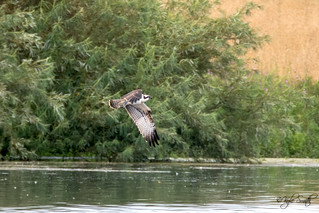
From the trees one of the fledged youngsters flew onto the rest beside the nest. It called for a while and eventually another took to the pole to the left of that. After another five minutes or so, the adult arrived and at one point we had four osprey in the air and another two in the trees. One of the birds dropped into the water near the nest and rose again without a fish. We waited until it was late lunchtime and having watched an adult fly off towards the trout farm, we decided that it would like be a while before we saw much more action. We headed back for an ice cream and the journey home.

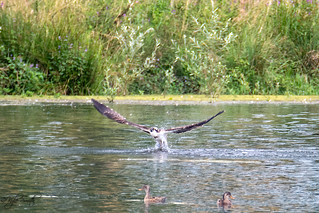
Sightings today (38) included: black-headed gull, blue tit, buzzard, canada goose, carrion crow, collared dove, common sandpiper, common tern, coot, cormorant, egyptian goose, great black-backed gull, great crested grebe, grey heron, grey wagtail, greylag goose, herring gull, kestrel, lapwing, little egret, long-tailed tit, mallard, mandarin duck, marsh harrier, moorhen, mute swan, osprey, pheasant, pied wagtail, reed bunting, rook, sand Martin, starling, swallow, swift, tufted duck, willow warbler and woodpigeon.
 The other was a chap who had been there from first light and we were informed that the kingfisher hadn't shown all morning - this was 9.10am. Some noisy reed warblers showed well and a single sedge warbler dropped in. Throughout our time there the kingfisher stayed away and it was left to the dragonflies to entertain - many brown and migrant hawkers.
The other was a chap who had been there from first light and we were informed that the kingfisher hadn't shown all morning - this was 9.10am. Some noisy reed warblers showed well and a single sedge warbler dropped in. Throughout our time there the kingfisher stayed away and it was left to the dragonflies to entertain - many brown and migrant hawkers.
